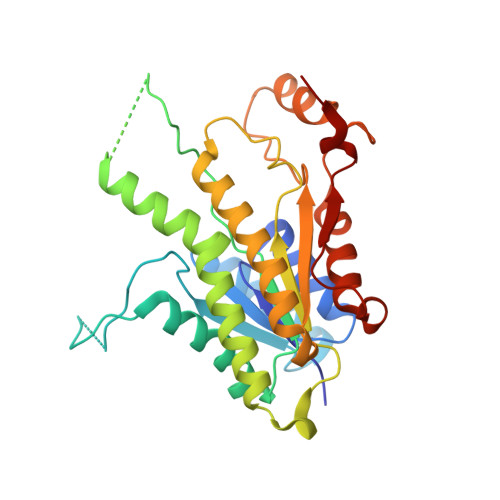Discovery of potent pteridine reductase inhibitors to guide antiparasite drug development
Cavazzuti, A., Paglietti, G., Hunter, W.N., Gamarro, F., Piras, S., Loriga, M., Allecca, S., Corona, P., McLuskey, K., Tulloch, L., Gibellini, F., Ferrari, S., Costi, M.P.(2008) Proc Natl Acad Sci U S A 105: 1448-1453
- PubMed: 18245389
- DOI: https://doi.org/10.1073/pnas.0704384105
- Primary Citation of Related Structures:
2QHX, 3H4V - PubMed Abstract:
Pteridine reductase (PTR1) is essential for salvage of pterins by parasitic trypanosomatids and is a target for the development of improved therapies. To identify inhibitors of Leishmania major and Trypanosoma cruzi PTR1, we combined a rapid-screening strategy using a folate-based library with structure-based design. Assays were carried out against folate-dependent enzymes including PTR1, dihydrofolate reductase (DHFR), and thymidylate synthase. Affinity profiling determined selectivity and specificity of a series of quinoxaline and 2,4-diaminopteridine derivatives, and nine compounds showed greater activity against parasite enzymes compared with human enzymes. Compound 6a displayed a K(i) of 100 nM toward LmPTR1, and the crystal structure of the LmPTR1:NADPH:6a ternary complex revealed a substrate-like binding mode distinct from that previously observed for similar compounds. A second round of design, synthesis, and assay produced a compound (6b) with a significantly improved K(i) (37 nM) against LmPTR1, and the structure of this complex was also determined. Biological evaluation of selected inhibitors was performed against the extracellular forms of T. cruzi and L. major, both wild-type and overexpressing PTR1 lines, as a model for PTR1-driven antifolate drug resistance and the intracellular form of T. cruzi. An additive profile was observed when PTR1 inhibitors were used in combination with known DHFR inhibitors, and a reduction in toxicity of treatment was observed with respect to administration of a DHFR inhibitor alone. The successful combination of antifolates targeting two enzymes indicates high potential for such an approach in the development of previously undescribed antiparasitic drugs.
Organizational Affiliation:
Dipartimento di Scienze Farmaceutiche, Università di Modena e Reggio Emilia, Via Campi 183, 41100 Modena, Italy.
















